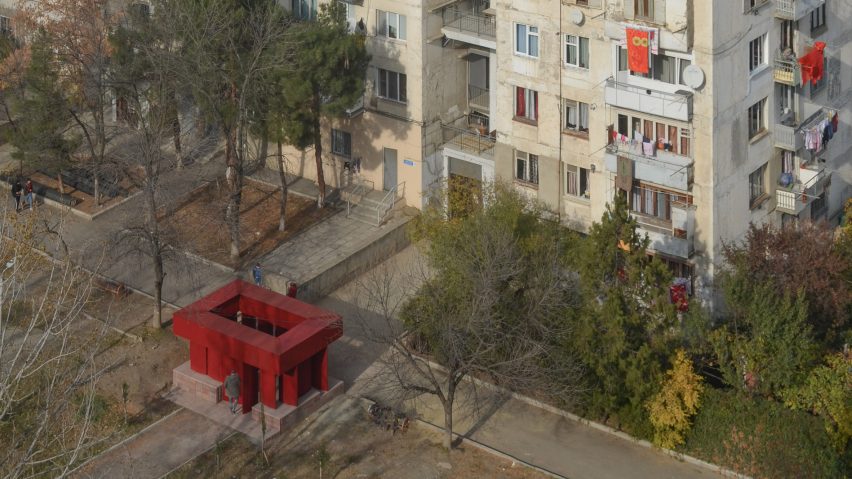
Pivoting red metal panels form walls of neighbourhood pavilion in Tbilisi
Design collective Medium has completed 8-23-VI, a pavilion with moving walls that creates a new public place for residents of the Gldani neighbourhood in Tbilisi, Georgia.
Made of pivoting red corrugated metal panels raised on a base of breeze blocks, the pavilion offers is a sheltered spot for neighbours to gather.
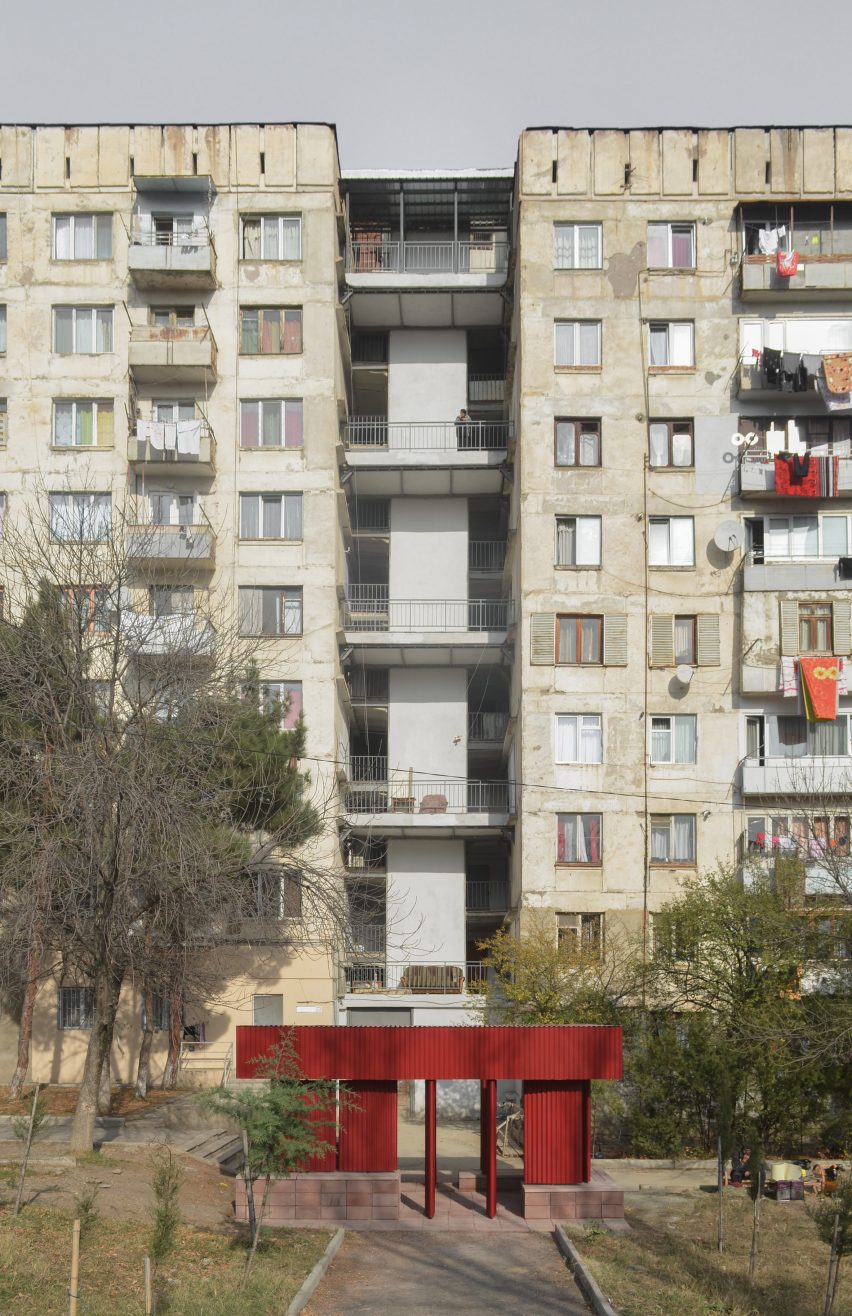
Medium started working on the pavilion as part of the first Tbilisi Architecture Biennial in 2018, an event that invited architects to explore how Gldani residents have built their own extensions and conversions from scrap materials.
Other, temporary, pavilions included a corrugated metal shack in a truck park, a wooden treehouse-style hide in a bridge, and an abandoned-looking house filled with thorn bushes.
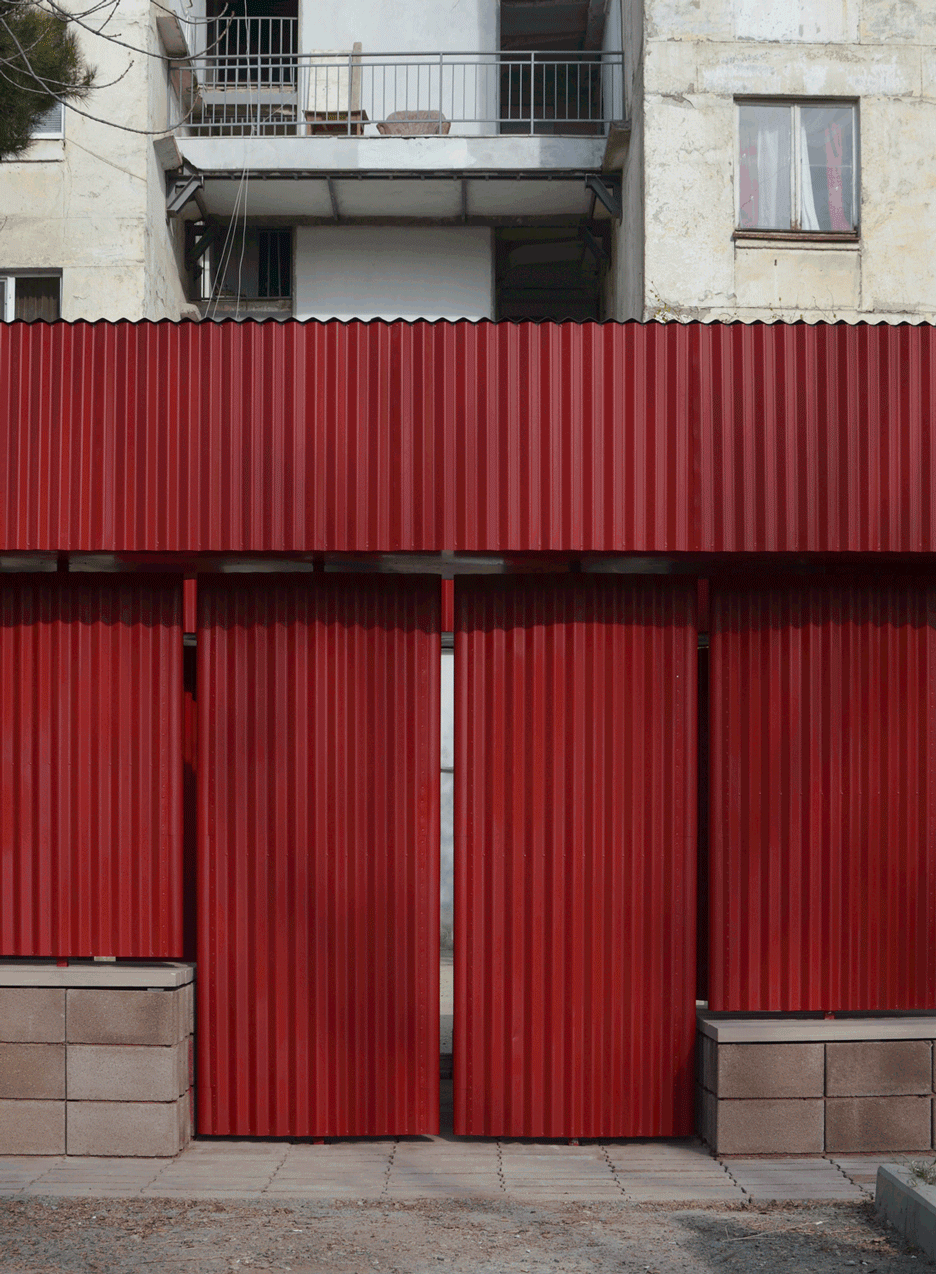
Construction began on Medium's pavilion during the biennial, but delays lead to it only being finished this winter.
Sitting in front of a residential tower called Block 23, 8-23-VI is now a permanent fixture in Gldani, a northern suburb in Georgia's capital city.
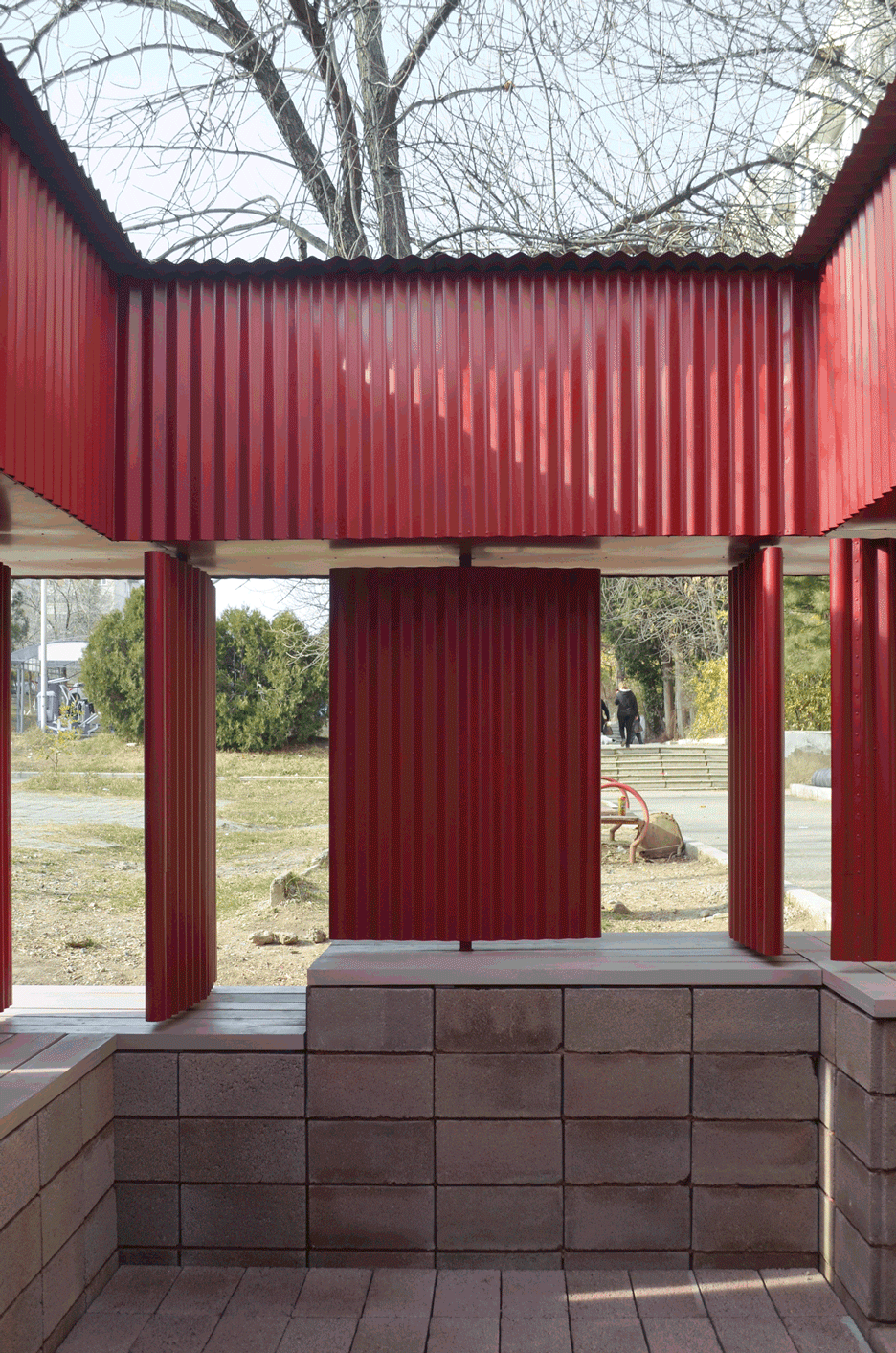
"The project took much longer than expected, but from this arose many opportunities to engage with the residents of Block 23," founding member of Medium Benjamin Wells told Dezeen.
"There was certainly some scepticism to begin with, in part because most new structures in Gldani's public space are state-sponsored and built just before elections, but the project's gradual emergence has given it time to become accepted and appreciated."
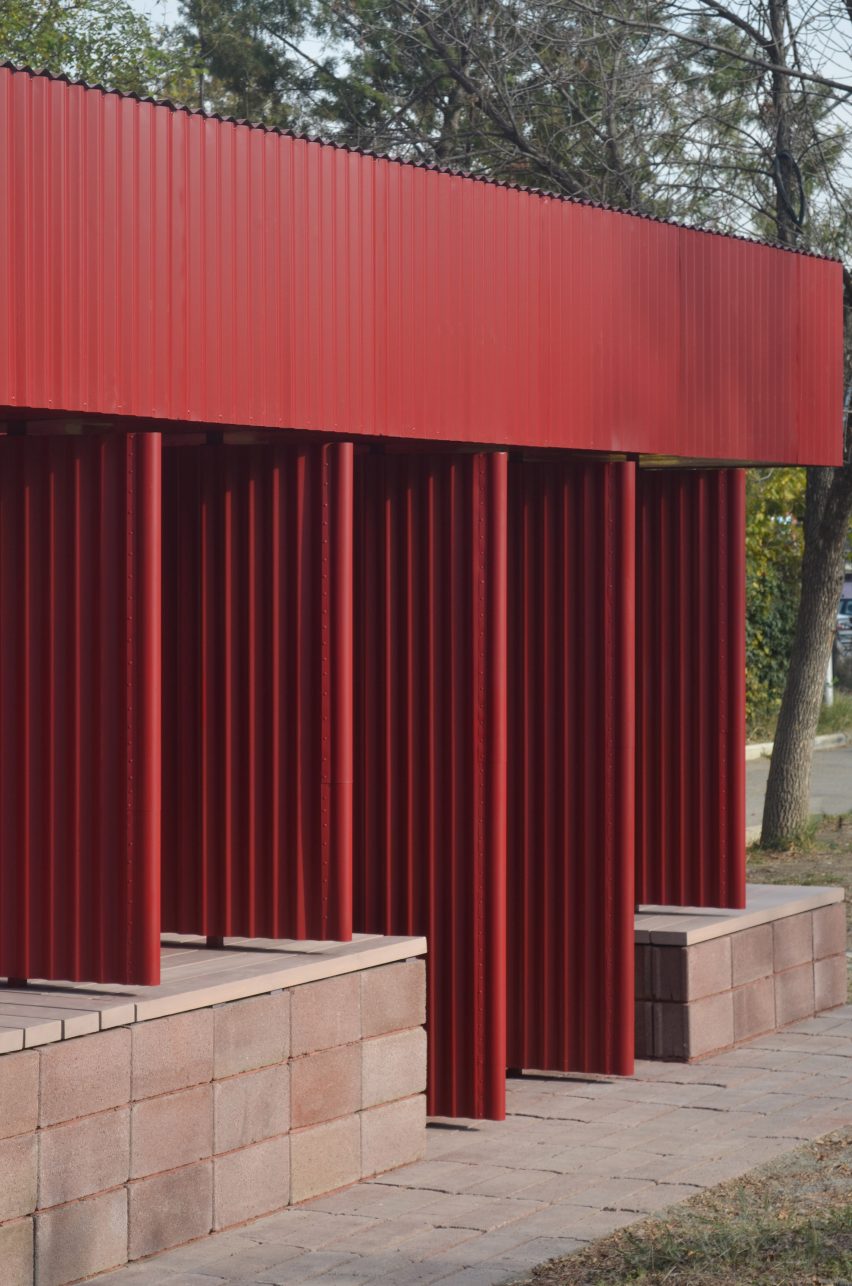
Medium looked at the resident's own additions to their homes when designing the rectangular pavilion.
"8-23-VI takes its cues from Gldani's many self-built garages and extensions, which each take a selection of everyday, affordable materials and transforms them into a striking variety of architectural expressions," said Wells.
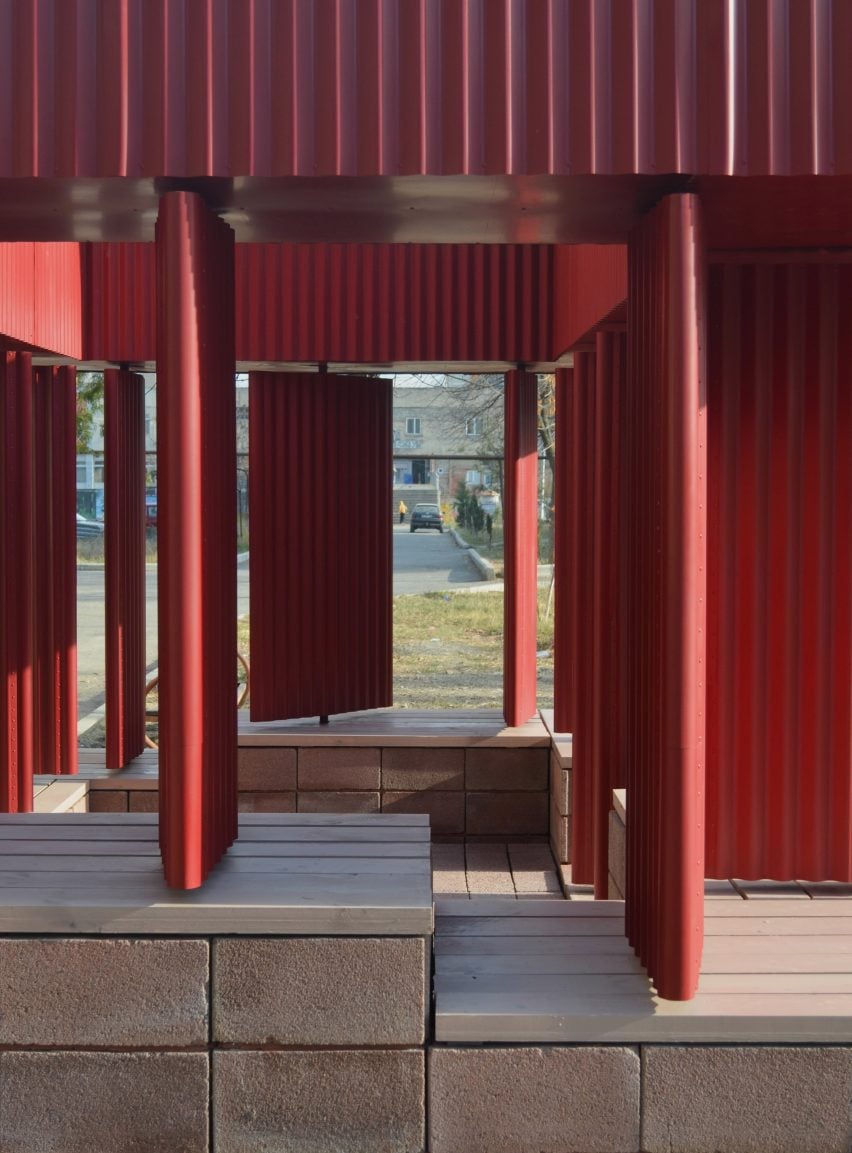
Medium also used inexpensive materials, tying them together thematically with the palette of red.
"The monochromatic theme emerged in reaction to the perpetual grey of the surrounding tower blocks, as well as from the limited colour options of the cheapest proprietary cladding material we could find – corrugated sheet roofing," said Wells.
"We intensified the pavilion's abstraction with red-hued blocks and mortar, but the colour also has emotive qualities - reminding visitors of everything from the Soviet Union flag to the rich culture of Georgian wine."
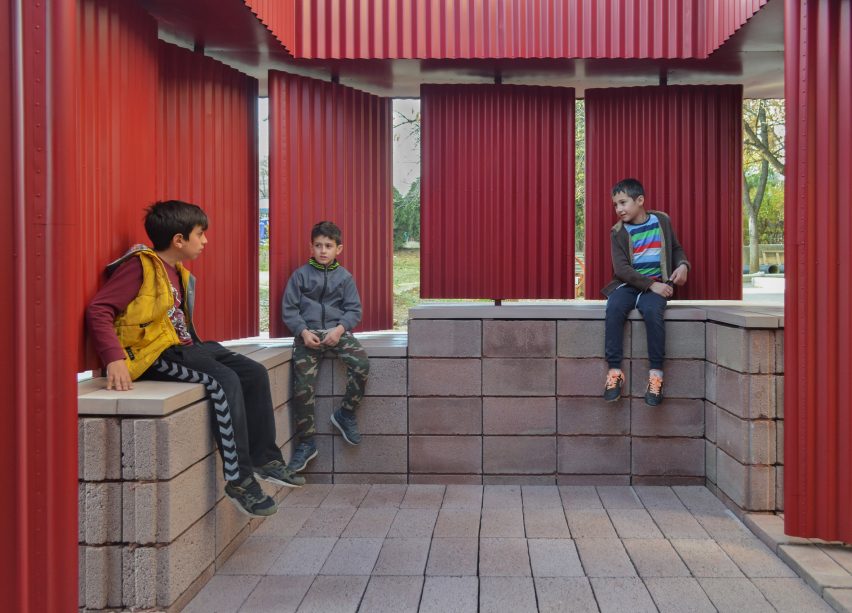
The lower part of the pavilion is a stepped plinth made of breeze blocks sandwiched together with the reddish mortar and topped by slats of timber that turns the top into bench-style seating.
Red metal columns extend from the plinth and a ball bearing mechanism allows the panels to rotate around them so they can open and shut like doors and windows.
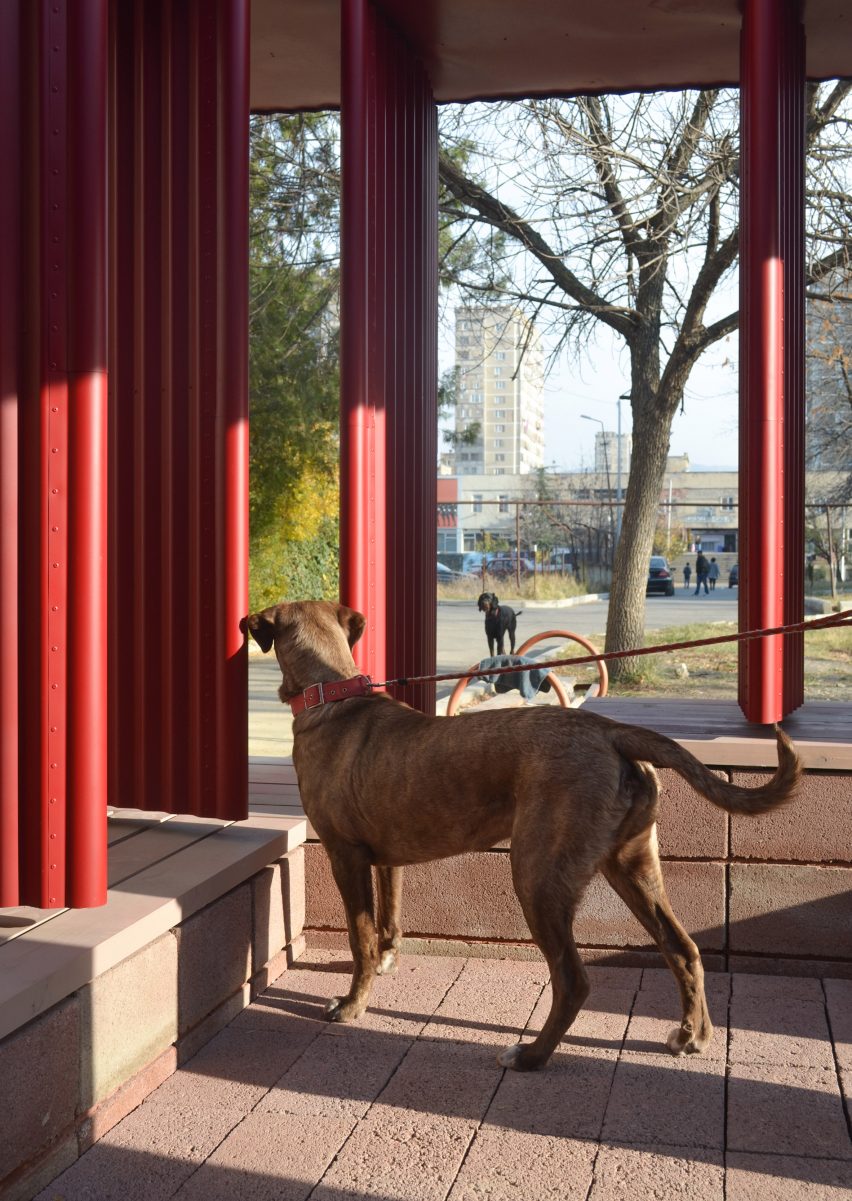
A red canopy of corrugated metal extends towards the centre of the pavilion but doesn't meet in the middle.
Instead, a rectangular gap leaves it open to the sky so it is ventilated even with all the panels closed around the exterior.
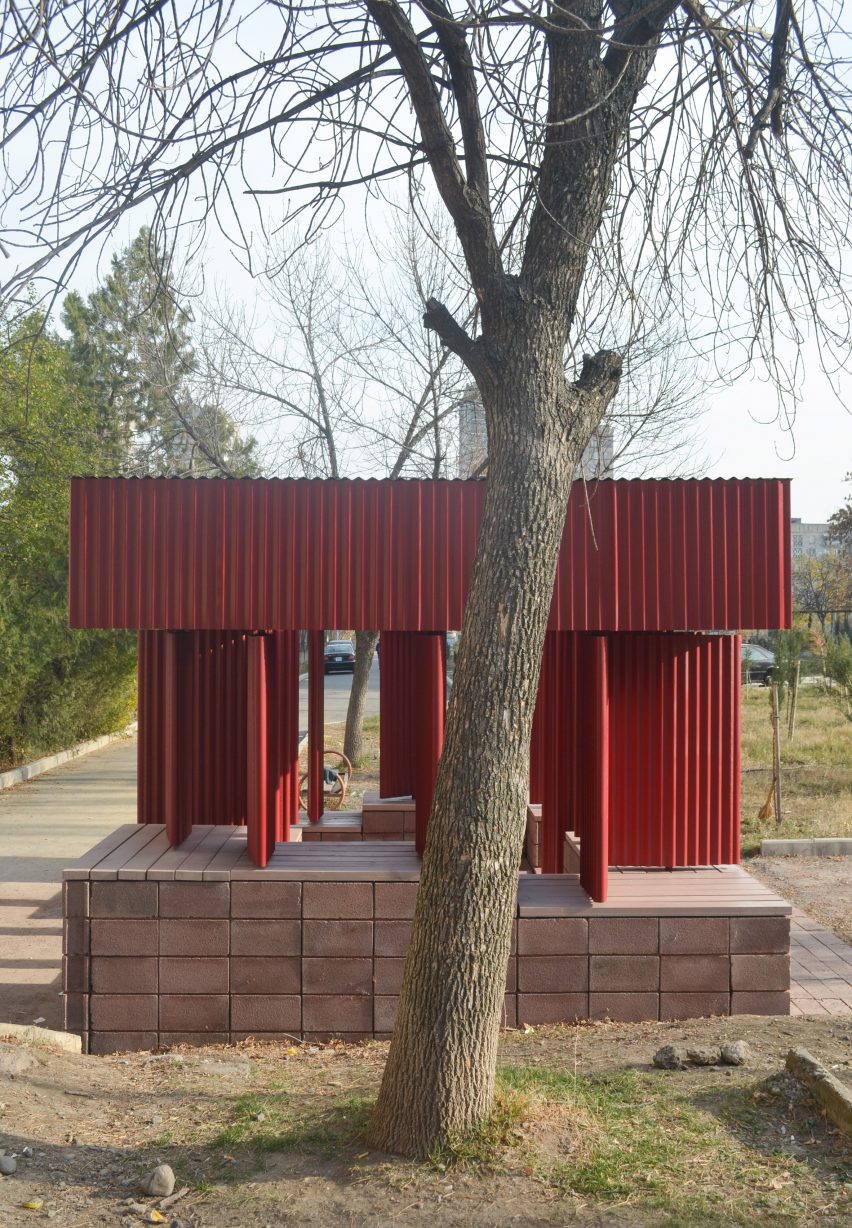
"The rotating panels have already proved popular with local children, but we're excited to see what other uses spring brings for 8-23-VI," said Wells.
"The shifting plinth and rotating panels allow the space to be continually transformed, setting the stage for a multiplicity of activities, be it gathering, sitting, sharing or playing."
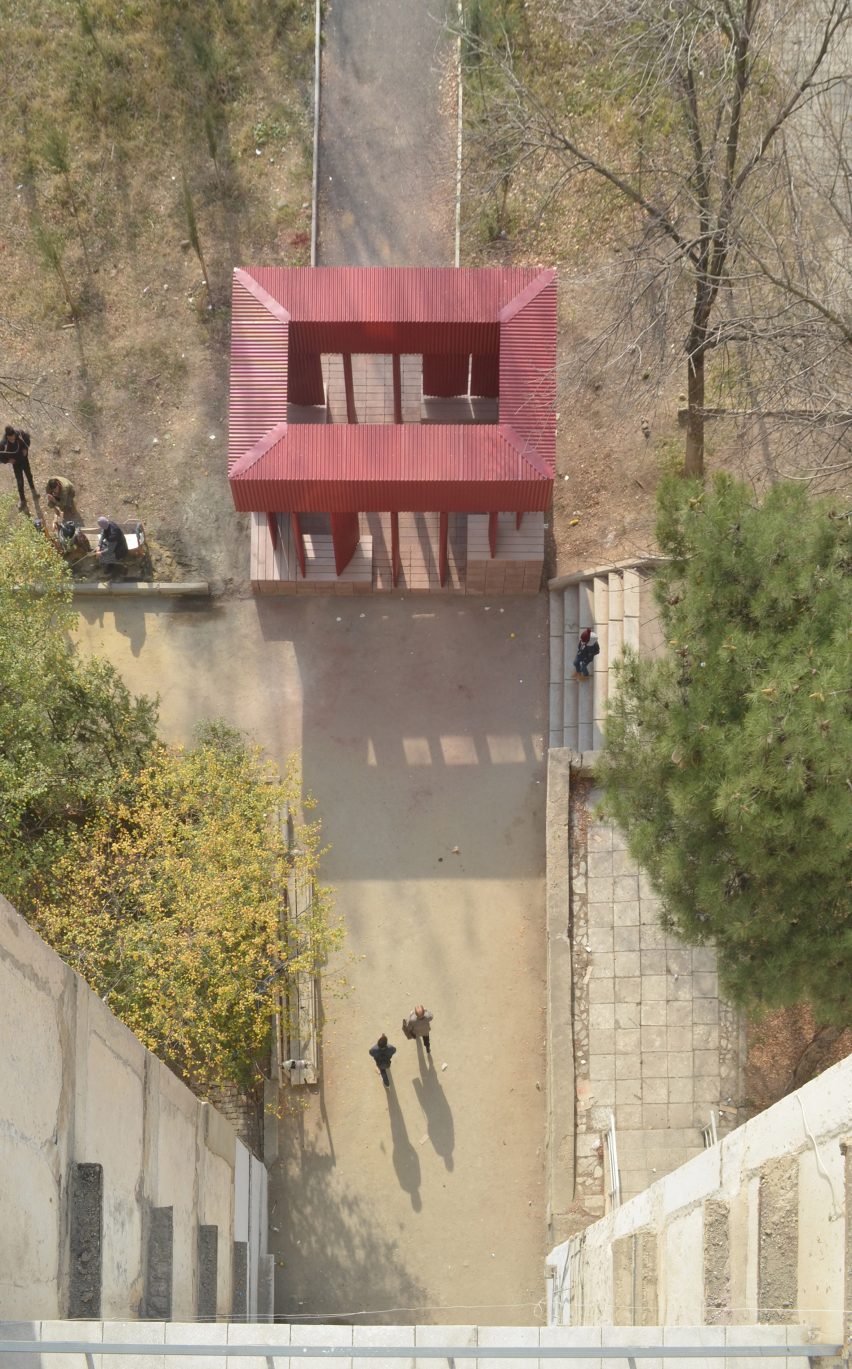
Architectural educationalists Matt+Fiona also used pivoting walls for an outdoor classroom they built in UK, and a team from Tsinghua University School of Architecture created a visitor centre in China that has doors that open and close automatically when they sense a change in temperature.
Photography is by Benjamin Wells.
Project credits:
Design: Medium
Team: Camille Filbien, Benjamin Wells, Francis Naydler, Jacob Sturdy
Support from: Creative Europe Programme of the European Union and the Royal Danish Academy of Fine Arts (KADK) / Political Architecture: Critical Sustainability
Commission: Tbilisi Architecture Biennial
Construction: ALL-P Metal / Zviad Chachanidze
Local coordination: Nikusha Lomidze